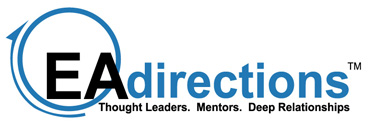What value does the EA function provide to the enterprise? That question consistently ranks in the top ten list of most frequently asked EA questions. The question, unfortunately, doesn’t lend itself to a simple answer. It is more often a matter of value being in “the eye of the beholder”. In other words, the answer to the question depends on who is asking and what answer they expect to hear based on their personal and professional interpretation of the word “value”.
A systematic, multi-part approach to addressing the value question can lend clarity. By classifying the various ways that EA groups contribute value, and identifying the stakeholder communities and how they align themselves with those classifications, each organization can address the value question in terms that are meaningful to their particular stakeholder mix. In our experience every organization always has multiple value expectations.
The weighting among various value contributors differentiates one organization from the next. The weightings will change as the EA function grows and evolves. To begin to answer the value question, lets define three possible value contribution classes. These are focused not on what an EA function is, but on what it does for the enterprise:
Project Support: In some organizations, value is defined exclusively by an individual’s direct contribution to the completion of project-oriented tasks. While one can argue as to what proportion of individual EA team member’s time is directly or indirectly linked to project tasks, and it will vary by role, skill set and EA maturity, in the aggregate every EA team interested in long-term survival must make their contribution to project completion visible. After all, it is the rare organization that doesn’t perceive “getting things done” as the highest value component. As EA teams evolve, contribution to project success will become less hands-on, design-oriented and become more “guidance” oriented as the EA team uses its collective insight into the future state and roadmaps to inform project activities. In these cases, getting things done “right”, in consideration of both project and enterprise requirements, becomes the operative value contribution.
Strategic Direction: The “raison d’être” of an EA group is to understand the strategic direction of the organization and capture it into a future state representation that reflects the eventual achievement of that direction. For leaders that believe in EA, their expectation is that the EA organization will invest resources in creation of go-forward standards, patterns, platforms, models and other representations. After all, an EA team cannot effectively and efficiently perform their “support projects” value contribution if they don’t have a basis to use in providing guidance. Therefore, creating useable and prescriptive future state guidance, and communicating those directions to the project and asset communities, is a key value contribution that must be included in the mix.
Portfolio Transformation: It is a rare organization, indeed, that doesn’t suffer from the accumulation of past incremental additions to its asset portfolios (technology, solutions, information, etc.). Each addition was, at the time, fully justified and sensible in the context of the problem they were trying to solve. Only upon retrospective analysis does an organization discover the burden those portfolios place upon them in the form of cost, resources, or inflexibility. Given the future state holistic perspective defined by an EA function, a significant value contribution of EA is to help guide portfolio transformations to shed excess or duplicate components and bring them into alignment with the go-forward wishes of the organization.
By analyzing how the EA function can contribute in each of these categories, and by thoroughly understanding the expectations of stakeholder communities in each, the EA team can strike a balance that will satisfy itself that it is doing the right things, and demonstrate it to leadership as well.
